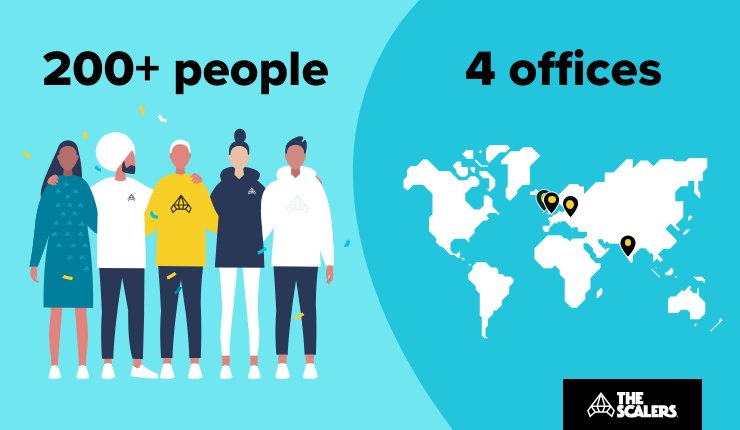Events in recent years have highlighted more than ever the need for more of a conversation about inclusivity and diversity in the workplace, and a deeper understanding of the cultural differences that shape our respective organisations’ visions and ways of working. Simply championing diversity is often correctly identified as hollow bandwagon sloganing rather than a properly thought out and implemented idea — action is where it counts. Few people are arguing for representation for representation’s sake, nor hires brought in simply to fill quotas and tick boxes — that doesn’t only harm the integrity of the company itself but also the deemed suitability of the hires themselves — but equality of opportunity should be a right afforded to all regardless of background.

First things first, if we want to tackle the issue of buzzwords, what exactly do ‘diversity’ and ‘inclusion’ mean in the context of the working environment? Diversity in the workplace could best be regarded as the promotion of a varied workforce, which includes team members who represent a fair cross-section of society. A diverse team includes members from all cultures, religions, ethnicities, and both sexes, for example. Distinct from diversity, inclusion can be thought of as how that diversity is utilised so that every employee’s unique strengths are realised.
So now that we understand what the terms mean, let’s dive deeper into how to build a more inclusive workplace.
1. Recognise that diversity alone doesn’t equal inclusivity
Acknowledging that diversity doesn’t automatically equal inclusivity is key. Too many companies make the mistake of assuming that diversity and inclusion are synonymous or that one automatically implies the other — and that simply isn’t the case. A 2018 Gallup report stated “recognising that diversity and inclusion are very different things is the first step in the journey toward creating a uniquely diverse and inclusive culture.”. But the question remains: how to create an inclusive culture at work — in practice?
To quote Gallup directly: “Inclusion has to be understood as very different from diversity because simply having a wide roster of demographic characteristics won’t make a difference to an organization’s bottom line unless the people who fall into any one demographic feel welcomed.”
Essentially, employees in inclusive work spaces feel appreciated for their unique characteristics and what they bring to the table as individuals and are more comfortable sharing their ideas which can help innovation and make a compelling business case for a diverse workforce.
2. Celebrate employee differences
One of the best ways to show employees that you respect their backgrounds and traditions is to invite them to share those in the workplace. Some organisations have a multi-faith prayer room to accommodate employees practising different religions. These spaces can double up as meditation rooms for colleagues who don’t adhere to any particular faith. Additionally, celebrating different festivals as an organisation such as Christmas, Eid, and Diwali — including respective cuisines — is a great way to boost inclusion and help your teams bond and get to know each other on a more understanding level.

3. Listen to your team members
Who better to ask about ways to improve inclusivity than your employees themselves? Creating a safe and inclusive environment for your employees to air concerns, share personal struggles they might be going through in their private lives, and discuss ways they would like to move forward. Also consider an anonymous poll or survey where more introverted employees can share their thoughts, opinions, and ideas to the company leadership. If you have monthly or quarterly town halls, perhaps afterwards you could send a participation survey with questions surrounding employee wellbeing and whether they feel included in the company’s culture.
4. Employ a Chief Happiness Officer
A CHO is there to build an inclusive workplace and cultivate your company culture by instilling the DNA, organising team-building events, bonding with the staff and understanding their goals and motivations — essentially, they’re an integral part of a modern, dynamic company. They also facilitate seamless working and cross-cultural alignment when you’re operating with a distributed offshore setup. Overall, your CHO is perfectly placed to listen to your employees and help to foster a more inclusive workplace and culture throughout the organisation.
“As the CHO for Preqin in Bangalore, my primary responsibility are the people. I’m passionate about technology and knowledge, and my role is to make Preqin’s Bangalore office a great place to work.”

5. Be democratic in your recognition of success
According to Forbes, “companies that democratise recognition remove the hierarchy from performance feedback”. Rather than recognition being solely a top-down practice given by one manager, this practice empowers everyone in an organisation to take a more active role in recognising their colleagues’ good work. Whether it’s sending a company-wide ‘thank you’ email for a well-executed campaign or rewarding an employee through a specific programme — building inclusion isn’t only about recognising different identities, but also about understanding (and properly recognising) the importance of people at all levels of the organisation.

How to create an inclusive culture at work: a conclusion
We spend such a lot of our time at work, so it’s important to feel valued, accepted and supported there. Inclusion is great for business too — according to research by accounting giant Deloitte, organisations with a focus on how to create an inclusive culture at work are six times more likely to be innovative, six times more likely to be able to efficiently anticipate and respond to change, and twice as likely to meet or exceed financial targets. So, it’s fair to say that learning how to create an inclusive culture with a diverse workforce should be pretty high in your list of priorities for 2020 and beyond. But, it’s important to remember that building an inclusive workplace is a constant process, and it’s never really ‘complete’ — as your business evolves, so should your inclusion strategy.
If you’re looking to build a development team to transform your business, feel free to reach out to us by filling out the contact form. One of our senior executives will get back to you shortly and help you move forward based on your specific requirements.
Build Your Team,
Not Just a Contract
With The Scalers’ offshore dedicated development team, you get engineers who join your workflow for the long run. Grow steadily, stay flexible, and work with people who care about the product as much as you do.








